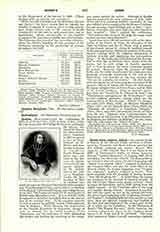

Quem terra, pontus, sidera.—An ancient hymn in honor of the Blessed Virgin, ascribed to Fortunatus by Thomasius and Mone without question but also without assigning any reason. Kayser (Beitrage etc., I, 393) remarks that it is not found in the MSS. of Fortunatus’s works, to whom, however, Dreves (“Analecta Hymnica”, L, Leipzig, 1907, 86-8) and Blume (see Hymnody and Hymnology) refer it. The Roman Breviary divides it into two parts: the first, beginning with “Quern terra, pontus, sidera”, assigned to Matins in the Common Office, and also the Little Office of the Blessed Virgin; the second, beginning with “O gloriosa virginum”, similarly assigned to Lauds. Both parts conclude with the doxology of Marian hymns, “Jesu tibi sit gloria etc.” As found thus, the hymns are revisions, in the interest of classical prosody, of the older hymn, “Quern terra, pontus, aethera”, found in many old breviaries and in MSS, dating from the eighth century. In the Cistercian office it was sung at Compline during Advent. Sometimes it was divided into two parts, as now in the Roman Breviary, the second part beginning with “O gloriosa Domina” (or “femina”). Including both the older and the revised form, there are eighteen translations into English of the first part and fourteen of the second part, nearly all of which are by Catholics. In the Marquess of Bute’s “The Roman Breviary” (1879), however, the versions selected are those of the Anglican translators, J. M. Neale and R. F. Littledale. The beautiful versions of Father Caswall, appearing originally in his “Lyra Catholica” (1849), are easily accessible in the reprinted work (London, 1884). For first lines of the various translations, sources, authors, see Julian, “Dict. of Hymnology” (2nd ed., London, 1907, 944). To his list should be added the translations of Archbishop Bagshawe (“Breviary Hymns and Missal Sequences”, London, 1900, 106-7), and Judge Donahoe (“Early Christian Hymns”, New York, 1908, 80-1). The revised form of the Latin text as well as the older forms, with variant readings and some interesting notes, may be found in Daniel (“Thesaurus Hymnologicus”, I, 172; II, 382; IV, 135), and in Mone (Lateinische Hymnen des Mittealters, II, 128-31). For Latin text and English tr., ancient plain song harmonized, and alternative musical setting, see “Hymns, Ancient and Modern” (London, 1909, Hymn 222). The official or “typical” melody will be found in the “Antiphonary“.
H. T. HENRY

